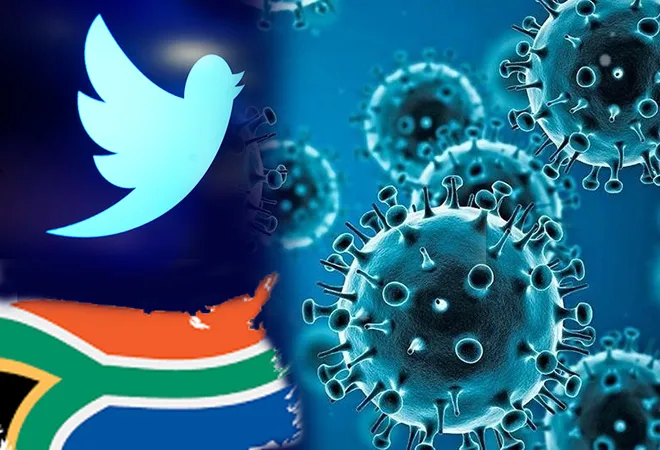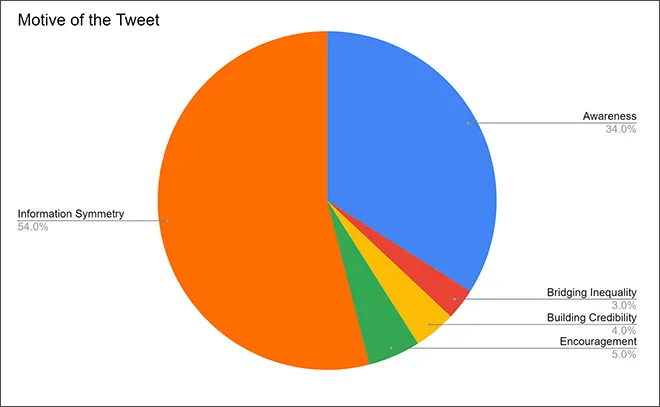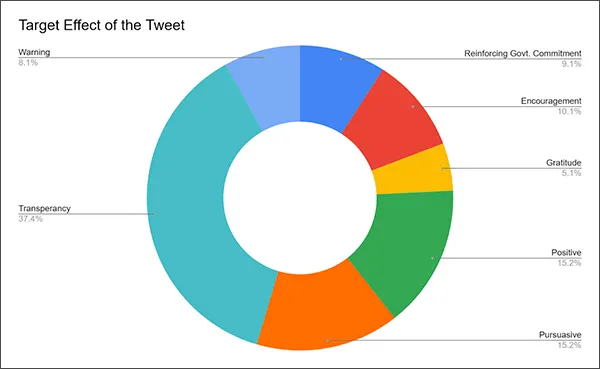
With Omicron raging across the world, countries have been able to tackle the rise in infections differently, from minimising them early on to being overwhelmed. The response effectiveness has been determined partly by the timeliness and magnitude of government activity, as well as how people received, interpreted, and responded to information imparted by governments and other organizations. While there is no unanimous communications approach for conveying information during a pandemic, we build on key insights from South Africa's communication during the Omicron Wave to highlight some fundamental characteristics of effective risk communication in this article. For governments to employ good risk communication strategies, they must ensure that various stakeholders are a part of the communication instead of being mere recipients. Long-term success is ultimately contingent on gaining and maintaining public confidence. We demonstrate how government officials' communications could achieve public trust, participation, and involvement through expanding and sustaining community engagement.
For governments to employ good risk communication strategies, they must ensure that various stakeholders are a part of the communication instead of being mere recipients.
Twitter is a major social media platform that has had a significant increase in users during the COVID-19 pandemic. It has been observed to be an effective means for disseminating information in previous and current disease outbreaks. For our research, we examined Twitter communication through South Africa's official government Twitter accounts, namely the Department of Health, South Africa and the National Institute for Communicable Diseases of South Africa. This investigation was carried out during the peak of Omicron from 5th December to 15th December 2021, with a sample of 63 tweets across the two sources. Twitter posts were classified based on their motivation, subject, and target effect (sentiment). During that period, South Africa was instrumental in terms of governmental policy reaction to the Omicron surge, as well as effective risk communication. The number of hospitalisations, the average length of stay in hospitals, as well as deaths observed in South Africa were much lower in the Omicron wave than in the Delta wave. India may learn and extract valuable insights from South Africa's risk communication, which might be a critical component in disseminating credible data, minimising misinformation, and preventing unnecessary panic.
The following are a few key highlights of tweets by the Department of Health and National Institute of Communicable Diseases, South Africa:
- In the case of risk communication, both the handles aimed to enhance Information Symmetry and increase Awareness regarding COVID-19 daily cases, Vaccination and Protocol.
- When the motive of the tweet was Information Symmetry, it focused on the Community, wherein the topics covered were COVID-19 Protocols, Launch of Health Complaints App, Health Updates and encouragement for Vaccinations. Subsequently, the targeted effect was Transparency, Persuasion and Reinforcing the Government’s Commitment for their people. The information was not sensationalised but presented in neutral ways.
- Their twitter communication indicated successful collaboration with institutions, media and civil society organisations. Even during the week where the infections were at their peak, the handles kept on updating information about other communicable diseases and co-morbidities along with COVID-19, indicating that their work against these diseases had not stopped. This showed pragmatism in their approach and helped portray their dynamic nature as a ministry.
India may learn and extract valuable insights from South Africa's risk communication, which might be a critical component in disseminating credible data, minimising misinformation, and preventing unnecessary panic.
Figure 1: Motive of the Tweet
 Source: Twitter Posts from Department of Health, South Africa (@HealthZA) and National Institute for Communicable Diseases of South Africa(@NICD) <5th December 2021 to 15th December 2021>; Sample Size: 63 Tweets.
Source: Twitter Posts from Department of Health, South Africa (@HealthZA) and National Institute for Communicable Diseases of South Africa(@NICD) <5th December 2021 to 15th December 2021>; Sample Size: 63 Tweets.
- Reinforcing Government Commitment was done in tweets that focussed on Awareness and Information Symmetry. For better two-way communication, initiatives like Electronic Vaccination Data System, Free Rides to Vaccination Sites, launch of the Complaints App and collaborations with media were taken up. These initiatives and their publicising may help impart credibility in the government.
- Collaborations with Experts and Influencers were frequently posted to Encourage individuals to Vaccinate themselves against COVID-19.
Figure 2: Theme of the Tweet
 Source: Twitter Posts from Department of Health, South Africa (@HealthZA) and National Institute for Communicable Diseases of South Africa(@NICD) <5th December 2021 to 15th December 2021>; Sample Size: 63 Tweets.
Source: Twitter Posts from Department of Health, South Africa (@HealthZA) and National Institute for Communicable Diseases of South Africa(@NICD) <5th December 2021 to 15th December 2021>; Sample Size: 63 Tweets.
Figure 3: Intended Effect of the Tweet
 Source: Twitter Posts from Department of Health, South Africa (@HealthZA) and National Institute for Communicable Diseases of South Africa(@NICD) <5th December 2021 to 15th December 2021>; Sample Size: 63 Tweets.
Source: Twitter Posts from Department of Health, South Africa (@HealthZA) and National Institute for Communicable Diseases of South Africa(@NICD) <5th December 2021 to 15th December 2021>; Sample Size: 63 Tweets.
Learnings regarding risk communication that other countries can adopt:
a) Agency and self-efficacy of the people:
The tweets always used the language of agency and self-efficacy of the individuals, reinforcing that it is in people’s hands to get themselves vaccinated and take preventive measures. Warnings about the gravity of COVID-19 were always accompanied by the people’s agency in tackling it. This is a key tool in risk communication and helps in giving a sense of control to the public over a situation. Moreover, the public was consistently encouraged to use the Health Complaints App, where the government acknowledged that some of the concerns of the public had not been addressed by them before and they were now taking proactive steps to solve their issues. This put the public not just at the receiver’s end of risk communication, but as a key stakeholder in it, which is one of the most important strategies in effective risk communication
b) Risk communication at local levels:
One of the most crucial aspects of effective risk communication, especially when the risks are at macro levels, is tailoring public health communication at distinct decentralised local levels. If information regarding active cases, positivity rate and deaths is not updated at the local levels daily, the vacuum will also fuel misinformation. The twitter handles of national or state government authorities can act as agents encouraging people to find and follow their local public health handles.
c) Community focus and Public Collaborations:
Risk communication by governments must be inclusive, including people and other stakeholders like the private sector, in a two-way communication. In the case of South Africa, collaborations with the media, health institutes and civil society organisations were regularly tweeted about. This also assists individuals in developing a shared awareness of hazards and maintaining faith in their government's capacity to handle risks.
d) Coordination between authorities:
Showing coordination between authorities in charge is important to reinforce trust and build shared responsibility; a tool which can be easily adopted. In one case where there was a discrepancy in the reporting of new cases between the Department of Health and NICD, corrective measures were instantly taken up and the due apologies for the confusion caused were given on the very same day. This helped reinforce among the public that there was coordination between authorities in charge, and that the sources they were using were credible.
In the case of South Africa, collaborations with the media, health institutes and civil society organisations were regularly tweeted about.
f) Using social media platforms more effectively:
Designating particular hashtags on platforms like Twitter and Facebook for transmission of official information, encouraging vaccinations and precautionary measures and updates may be a useful tool for local authorities in responding more efficiently. Hashtags such as #VaccinateToSaveSouthAfrica, #VaccineRollOutSA, #VoomaVaccination and #ComplaintsApp were employed by the Twitter handles in South Africa. Such handles could be made more specific to facilitate engagement across different themes.
Engagement with different stakeholders involved in risk communication is essential for effective crisis communication. Therefore, we propose that establishing two-way communication is critical for combating misinformation, harnessing public trust and sustaining COVID-19 appropriate behaviour (CAB). The cornerstones of our suggested communication strategies are transparency and civic involvement at local levels.
The views expressed above belong to the author(s). ORF research and analyses now available on Telegram! Click here to access our curated content — blogs, longforms and interviews.







 PREV
PREV




